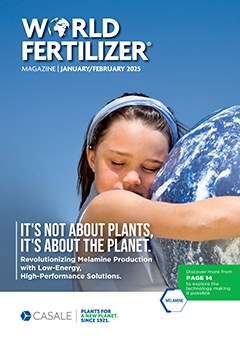Editorial comment
Following his US presidential inauguration on 20th January 2025, President Donald Trump, the 45th and now 47th President of the United States, has hit the ground running. In stark contrast to the chaos of his early days in office in 2016, Trump was this time ‘dialled in’ and ready to go. On his first days back in the White House he signed a series of wide-ranging executive orders with the aim, according to the text of his inauguration speech, to enable ‘a complete restoration of America’. These pronouncements addressed many actions from the renaming of the Gulf of Mexico to declaring national energy and border crises, the pausing of the TikTok ban, the ending of birth right citizenship and the pardoning of many of the January 6 defendants to name but a few executive actions. He had previously promised in an interview with Fox News during his campaign to be a dictator on ‘day one’ of his presidency and he certainly delivered with this ‘shock and awe’ approach. However, he had also said during this same interview, ‘After that, I’m not a dictator’. Having got our attention, we wait with bated breath to see what comes next as the ripples, or indeed waves, fan out across the US and inevitably the world.
Register for free »
Get started now for absolutely FREE, no credit card required.
Indeed, President Trump’s actions were perfectly timed to coincide with the World Economic Forum held in Davos, Switzerland. And it is fair to say that it was the executive orders entitled, ‘Declaring a national energy emergency’ and ‘Putting America First in International Environmental Agreements’, that caused the greatest consternation. The latter requiring the US Ambassador to the United Nations (UN) to advise the UN in writing of the US intent to withdraw from the 2015 Paris Climate Agreement with immediate effect. Whilst in itself no great surprise, Trump withdrew from the same agreement in his first term before the US re-joined under the Biden administration in 2020. However, it is the clear message of radical change and alternative priorities exemplified by the Trump mantra, ‘drill baby drill’, that gave the ‘great and the good’ at Davos, who themselves have long viewed ‘safeguarding the planet’ as a central tenet of sound global leadership, significant pause for thought. With every nation bar Iran, Libya and Yemen a current signatory of the 2015 Paris agreement, the potential loss of the US could have significant consequences and motivate other countries to themselves walk back on their climate commitments.
We were reminded that 2024 was officially the hottest year on record and that the US itself did not escape the effects of catastrophic climate related events. State Governor Gavin Newsom, recently posted photographs of the Californian wildfires with the stark message, ‘If you don’t believe in science, believe your own damn eyes’. Policymakers outside the US have remained unbowed by developments in the US. Ursula von der Leyen, President of the European commission, was adamant that Europe would not back down from its commitments, ‘Europe will stay the course and keep working with nations that want to protect nature and stop global warning’. She went on to say that ‘The Paris Agreement continues to be the best hope for all humanity’.
It is clear that a 2025 US withdrawal from the Paris Climate Agreement would be a seismic setback for global climate progress and would undeniably damage international relations. However, it is likely that state governments, businesses and indeed international pressure could still push the US toward continued climate action despite any exit from the agreement.
This issue of World Fertilizer leads with a timely keynote article from Contributing Editor, Gordon Cope, entitled ‘The global promise for Environmental sustainability’, in which he discusses a road map toward greater environmental sustainability for the fertilizer industry.


